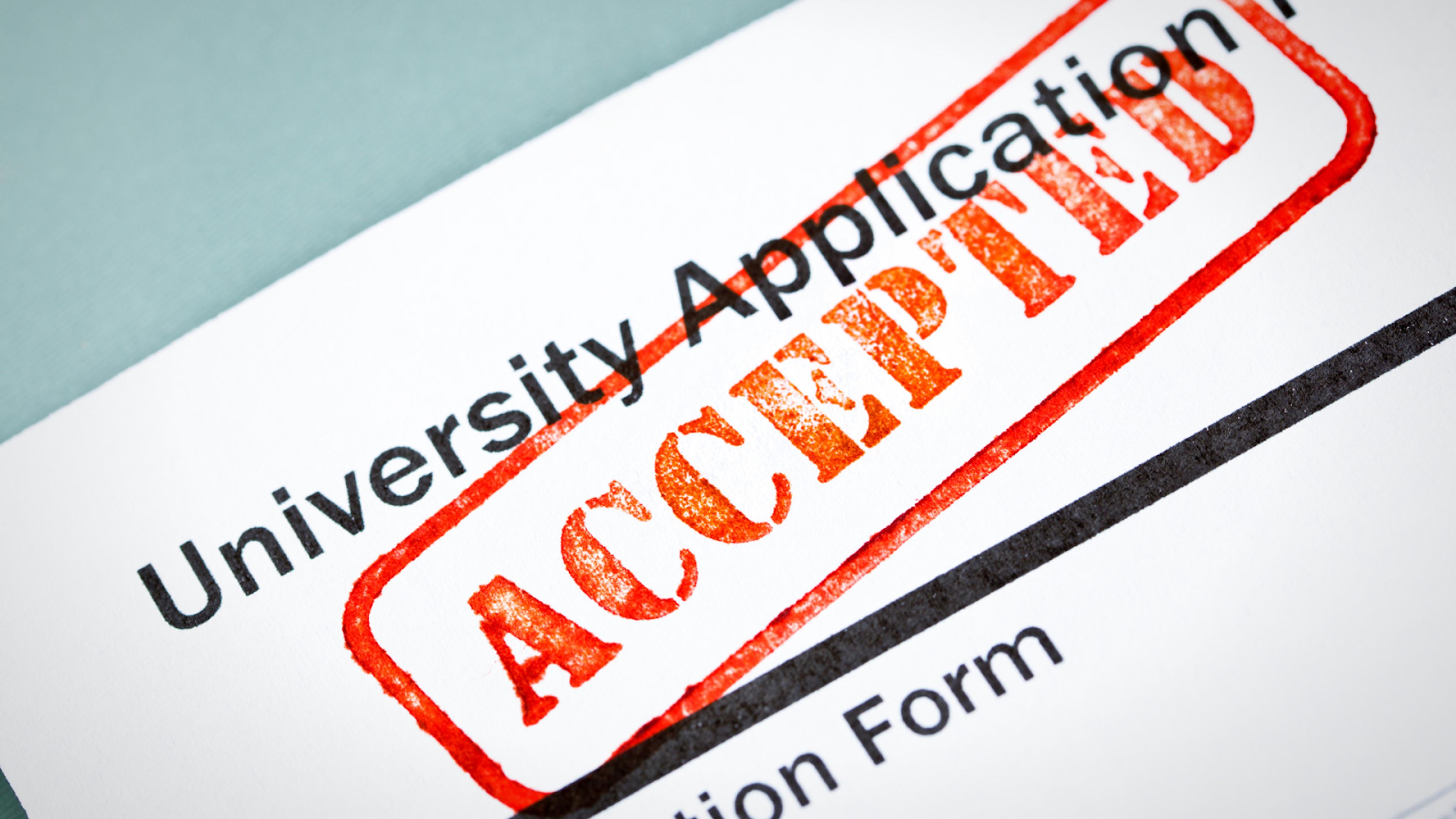
Join a free event
Learn from top coaches and industry experts in live, interactive sessions you can join for free.
Table of Contents
Can You Get Admitted to a Top Program With a Low GPA or Test Score?
Yes, you can. But let’s be real: it depends on how low, and what the rest of your application brings to the table.
Top MBA programs like HBS, Wharton, and Stanford don’t admit numbers. They admit people. And while GPA and test scores matter, they are only part of the story. A 3.2 GPA or a 640 GMAT won’t automatically shut the door, but it does mean you need to be strategic.
Here’s what you need to do:
- Offset weaknesses with strengths. Did your GPA dip freshman year but trend up later? Were you working full-time while studying? Did you take rigorous courses? Flag that context.
- Nail the rest of your app. A low score can be forgiven if you have exceptional leadership, a unique story, or standout professional impact. Use your resume, essays, and recs to shift focus from your stats to your strengths.
- Explain it (briefly). If there’s a clear reason for the low score like health issues, personal hardship, career switch, use the optional essay to address it head-on. Don’t make excuses, just provide context and show growth.
- Consider a supplemental boost. Taking a quantitative course (like Berkeley’s Math for Management or HBS Online’s CORe) and earning an A can help you prove academic readiness, especially if your GPA was below average.
Note: Average ≠ minimum. Stanford’s average GPA might be a 3.8, but they’ve admitted applicants with 3.1s. The key is what else you bring. The admissions committee reads between the numbers. Make sure your story is worth their attention.
Read: GMAT vs. GRE for Business School—Which Should You Take (and How to Ace Both)
What Counts as a “Low” GPA or GMAT/GRE Score?
It depends, not just on the number, but where you’re applying and what the rest of your profile looks like.
Let’s break it down by tier:
- Harvard, Stanford, Wharton (HSW): Anything below a 3.5 GPA or a 700 GMAT starts to raise questions. Below a 3.3 or a 670? Now you’re swimming against the current, but not out of the race.
- M7 Programs (Booth, Kellogg, MIT Sloan, Columbia, HBS, Wharton, Stanford): Under 3.3 GPA, GMAT below 680, or GRE below 310 typically lands in “below average” territory.
- Top 25 MBAs (Tuck, Ross, Duke, Yale, etc.): You’ll find more flexibility here, but anything below a 3.2 GPA or 650 GMAT still needs offsetting strengths elsewhere in your application.
But context is everything. A 3.1 from an Ivy League STEM program with rigorous quant coursework? Different story than a 3.1 in a less challenging major. Same goes for test scores; an engineer with a 680 might be viewed differently than a humanities major with the same score.
What else matters:
- Upward GPA trends: Did your grades improve each year? That’s a green flag.
- Quant confidence: Did you take (and excel in) courses like calculus, statistics, or accounting?
- Professional signal: Do your work experience or certifications show you can handle analytical rigor?
There’s no hard cutoff. Adcoms want to see evidence you can thrive academically, and if your GPA or test scores don’t scream that, you need to show it elsewhere. The key is not to panic, but to prepare your explanation and strengthen the rest of your app.
Read: GRE for Business School: Average Scores, Strategy, & More | Leland
7 Ways to Strengthen Your MBA Application With a Low GPA or GMAT
A low GPA or GMAT doesn’t have to be a dealbreaker, but it does mean the rest of your application needs to carry more weight. Here’s how to build a compelling, well-rounded profile that reassures admissions committees and puts your strengths front and center.
1. Own the Weakness Strategically (Don’t Hide It)
If your academic metrics fall short, address them head-on, but be strategic. The optional essay is your space to explain, not to make excuses. Focus on the “why” and, more importantly, what you’ve done since to close that gap.
Good framing looks like this:
“I take full responsibility for my academic performance during [time period]. Since then, I’ve [taken MBA Math / led complex financial projects / earned promotions], which better reflect my readiness for business school.”
Be honest, be accountable, and then pivot quickly to what you’ve learned and how you've grown.
2. Double Down on Professional Impact
If your numbers are shaky, your resume needs to do some heavy lifting. Admissions officers want proof that you're already thriving in the professional world, not just holding a job, but making things happen. That means clear upward mobility, increased scope, and measurable wins.
Think promotions, expanded team or budget ownership, or deals led. Your resume should read like a fast-moving trajectory with real momentum, not just a list of job duties. If you're in a non-traditional field, focus on leadership, innovation, and initiative. Impact is impact, whether it’s in startups, nonprofits, or the military.
3. Demonstrate Academic Readiness Elsewhere
A low GPA from years ago doesn’t define your current abilities. Show recent evidence you can thrive in a rigorous academic setting:
- Enroll in quant-heavy coursework (HBS CORe, MBA Math, UC Berkeley Extension)
- Score well on the GMAT or GRE, or if the test is the weak spot, reinforce your GPA, work performance, and rec letters instead
- Ask your recommenders to highlight your analytical skills, especially if you work in data, finance, ops, or consulting
4. Nail the Essays
This is where you shift the story. A great essay doesn’t apologize. It shows growth, self-awareness, and clarity of purpose. Talk about how your experiences shaped your goals, what you’ll bring to the class, and what kind of leader you want to become.
Let them see a future MBA alum, not just a candidate. When done well, a strong essay can outweigh a low GPA or test score, because it connects on a human level.
5. Choose Recommenders Who Can Vouch for Your Strengths
A generic rec letter won’t help you. You need someone who’s seen you in high-stakes situations, and who can vouch for your intellect, drive, and leadership. Ideally, they’ll speak directly to the traits your numbers don’t reflect.
If you’re worried about academic readiness, a recommender who says you lead analytically complex projects under pressure is gold. Coach your recommenders with specific examples they can draw from. A strong endorsement from the right voice can change how the rest of your application is read.
6. Excel in the Interview
The interview is your chance to personally reassure the school that you're smart, driven, coachable, and ready for the challenge.
If the GPA or GMAT comes up:
- Be concise, confident, and self-aware
- Practice your answer (no rambling or oversharing)
- Re-anchor the conversation around your trajectory, not your test scores
Use the interview to showcase polish, purpose, and maturity.
7. Apply Strategically and Smartly
There’s a big difference between “settling” and “strategic.” A smart school list can increase your chances and open real doors. Balance reach, target, and safety options. Look into schools that don’t require test scores (or offer waivers) if testing wasn’t your strength. And prioritize programs known for holistic review and support for career changers.
Schools like Kellogg, Ross, Yale SOM, and UNC Kenan-Flagler often look deeper than the numbers. Match yourself to schools where your story, not just your stats, has room to shine.
When a Low GPA or GMAT Can Hurt You Most
Not all low scores carry the same weight, it really depends on what you're aiming for. If you're targeting hyper-competitive post-MBA paths like private equity, investment banking, or MBB consulting, then admissions committees will look for clear signals that you can handle the analytical rigor. In those cases, a low GPA or sub-680 GMAT can raise real concerns, especially if your work experience isn’t already impressive or quant-heavy.
It’s also more of a red flag if you’re applying to MBA programs that are known for intense quantitative coursework; think Chicago Booth, MIT Sloan, or Wharton. If your academic record suggests you might struggle in those environments, schools may hesitate unless you’ve shown recent evidence of your academic readiness elsewhere.
A low GPA or GMAT is riskier when it’s combined with weaker professional experience. If your resume doesn’t show clear progression, leadership, or results, and your academics aren’t strong, then admissions officers have less to go on when assessing your potential.
In short: if the numbers are weak, everything else has to work harder. That’s why how you package your story matters just as much as the story itself.
Bottom Line: Don’t Let One Number Define Your Potential
A low GPA or GMAT doesn’t mean your MBA dreams are over, not even close! Admissions committees are made up of people, not algorithms. And people look for context, growth, and potential. If one part of your profile isn’t where you want it to be, the rest of your application becomes even more important. This is your chance to shift the focus and to show who you are beyond a number.
That means getting really intentional about how you frame your story. It’s about owning your setbacks, highlighting your strengths, and helping the adcom see the real, driven, capable person behind the stats. The most successful applicants aren’t perfect on paper, but they’re the ones who know how to connect the dots, tell their story with clarity and purpose, and leave the reader rooting for them.
Work With a Coach Who’s Helped Applicants With Below-Average Stats Get Into Top MBA Programs
Read next:
- Average GMAT Score by School: Business Schools Ranking 2025
- What is an MBA Degree? An Expert Guide (2024)
- The Different Types of MBA Programs—and Which One is Right for You
- How to Choose an MBA Program: The Discerning Student's Guide
- MBA Requirements: What You Need to Apply (and What Top Programs Really Look For)
FAQs – Low GPA or Test Scores for MBA
Can I get into an MBA program with a 2.0 GPA?
- It’s possible, but challenging, especially at the best business schools. A 2.0 undergraduate GPA is well below the average at most target MBA programs. That said, some executive MBA programs and full-time MBA programs with a holistic review process may still consider you if you show strong leadership skills, a high GMAT score, or exceptional professional experience. To gain admission, you’ll need to write compelling essays and secure recommendations that show your potential beyond grades.
How do I explain a low GPA in my MBA application?
- Start with honesty, but be strategic. Don’t make excuses. Instead, give brief context (e.g., personal hardship, grading scale differences, or an outlier semester), then focus on how you’ve grown since. Use other parts of your application like standardized tests or quant-heavy coursework to show you're academically ready for the rigor of a full-time MBA program.
What is the minimum GPA for MBA programs?
- There’s no official minimum GPA across the board, but top MBA programs usually see undergrad GPAs in the 3.4–3.8 range. Anything under a 3.0 is considered low by most mba admissions officers. Still, many schools look at your overall story, especially your career goals, impact, and trajectory, not just your academic record.
Can I get an MBA with a 3.2 GPA?
- Yes -- a 3.2 GPA is within range for many competitive programs, especially if other parts of your application are strong. If you’re targeting M7 or other high rankings programs, pair it with a solid GMAT or GRE score and highlight your leadership skills and work accomplishments to stay competitive.
What is considered a low GMAT score?
- Among GMAT test takers, a score below 600 is generally considered low, especially for target programs. That said, context matters: some schools care more about work experience and essays than standardized test scores, particularly in executive MBA programs.
Is 420 a good GMAT score?
- A 420 is well below average. Most full-time MBA programs report average GMAT scores in the 680–730 range. With a 420, it would be very difficult to gain admission to top MBA programs unless you have an exceptional profile in other areas.
Is 400 a bad GMAT score?
- Yes -- for most programs, a 400 falls significantly below the expected range. It places you far behind the typical GMAT test takers who apply to the best business schools. If you’re serious about an MBA, it’s worth retaking the test after dedicated preparation.
Is 500 a good GMAT score?
- A 500 is below average for most ranked MBA programs. It might be enough for some part-time or regional schools, but for competitive target programs, you’ll likely need to improve. Many applicants with a 500 still get in, but usually with exceptional work experience, clear career goals, and standout essays.
Browse hundreds of expert coaches
Leland coaches have helped thousands of people achieve their goals. A dedicated mentor can make all the difference.



























